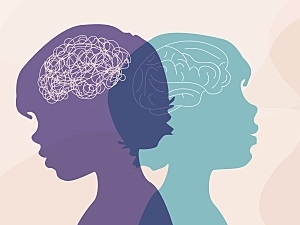During human embryonic development, the notochord plays an important role in patterning the central nervous system. Abnormalities of the notochord can result in malformations of the spinal cord, which are treated according to their anatomical features and current/predicted neurologic sequelae.
In recent years, physicians at Brigham and Women’s Hospital and Boston Children’s Hospital have encountered two newborn infants with a novel syndrome they believe arises from errors in notochord formation. In Child’s Nervous System, they report its clinical and radiographic characteristics, describe their treatment approach, and theorize about the embryogenesis of the malformation.
The authors are Jason A. Chen, MD, PhD and Joshua D. Bernstock, MD, PhD, MPH, clinical fellows in the Neurosurgical Residency Program at Brigham and Women’s Hospital, Boston Children’s Hospital, and Harvard Medical School, Benjamin C. Warf, MD, director of Neonatal and Congenital Anomaly Neurosurgery at Boston Children’s, and colleagues.
Description of the Syndrome
Four features define the syndrome:
- A cervicothoracic anterior “neural stalk” arising from the spinal cord and traversing ventrally into the thorax
- Vertebral abnormalities
- Thoraco–abdominal enteric duplication cyst
- Congenital diaphragmatic hernia
A literature review identified similar cases in the pediatrics literature, but the full set of features has never been described previously. The spinal cord anomaly was unusual in several other respects that differentiate it from similar entities, such as limited dorsal myeloschisis and split cord malformation:
- There was no intervening neurenteric cyst
- The anterior hemicord did not rejoin the posterior
- There was no clear septum or associated tethering lesion
- A central canal-like structure was visible as the stalk split from the spinal cord
- The spinal cord had developed normally below the level of the anomaly
- No neurologic signs or symptoms were noted
A genetic cause has not yet been identified but is an area of active research.
Management
In both cases, the diaphragmatic hernia and associated anomalies were surgically treated. The article describes the surgeries in detail, as well as the neonates’ prenatal and other congenital conditions. However, given the absence of neurologic symptoms, neither patient underwent intraspinal exploration.
Over more than three years of follow-up in the first case and over one year in the second, neurologic development has been normal, supporting a treatment strategy of observation for the spinal anomaly.
Postulated Embryogenesis
The authors hypothesize the notochord malformation arose because of the abnormal persistence of the ventral part of the neurenteric canal at the cervicothoracic junction.
The neurenteric canal is a structure formed during notochordal development that leads to communication of the neuroectoderm and endoderm. Failure of separation of the notochord from the ventral endoderm could have resulted in a malformed notochord with subsequent consequences for the development of the spinal cord. This hypothesis may explain the unique aspects of the spinal anomaly in these patients and some of the associated features of the syndrome.
Describing this new syndrome has further improved the understanding of its cause, and how the children are affected over time. The experience at the Brigham and Children’s Hospital may help to care for patients with this kind of congenital disorder around the world.
